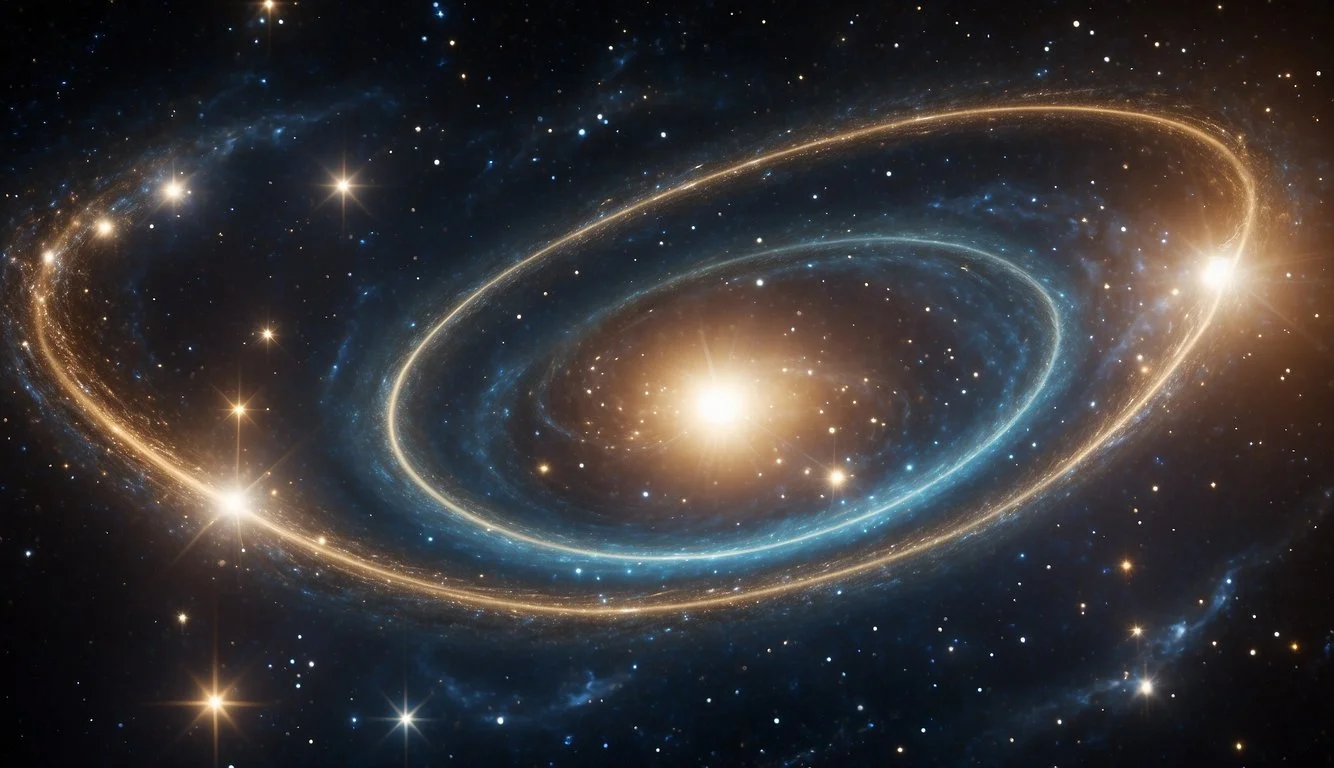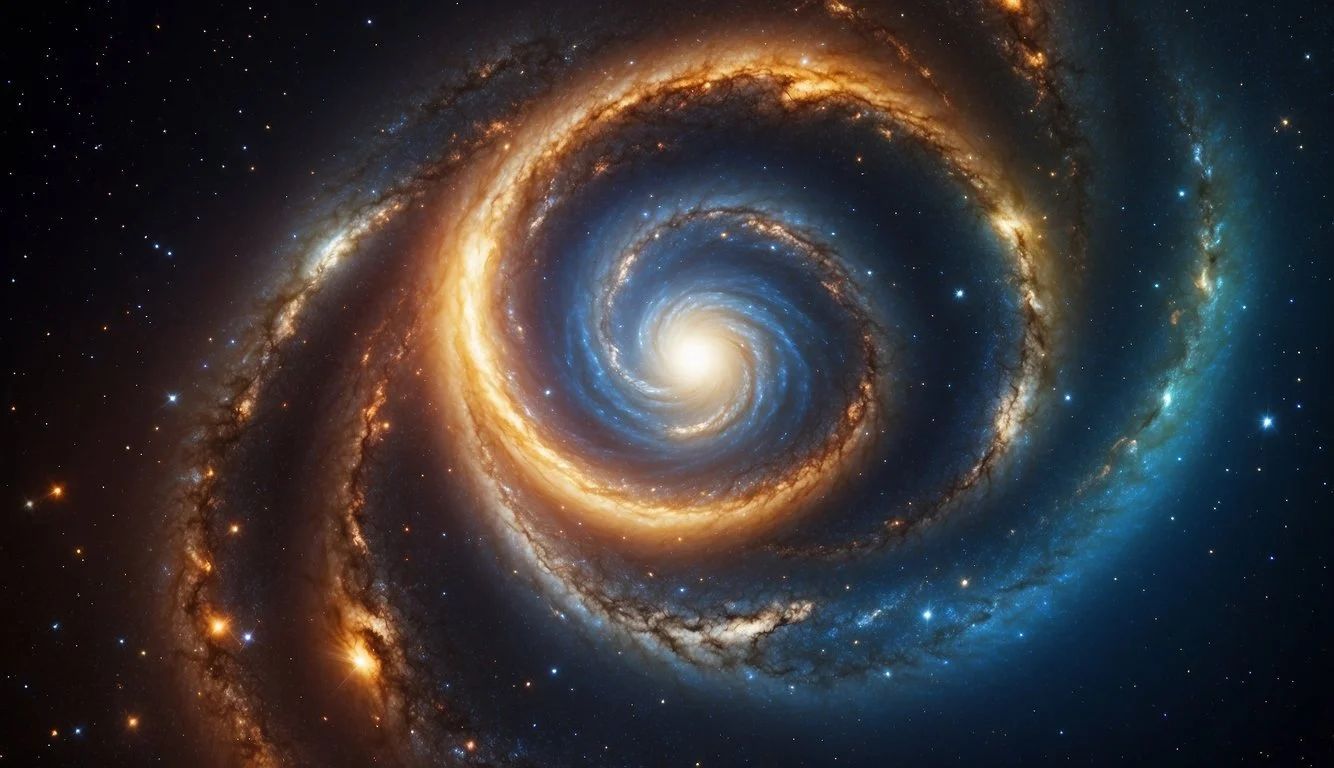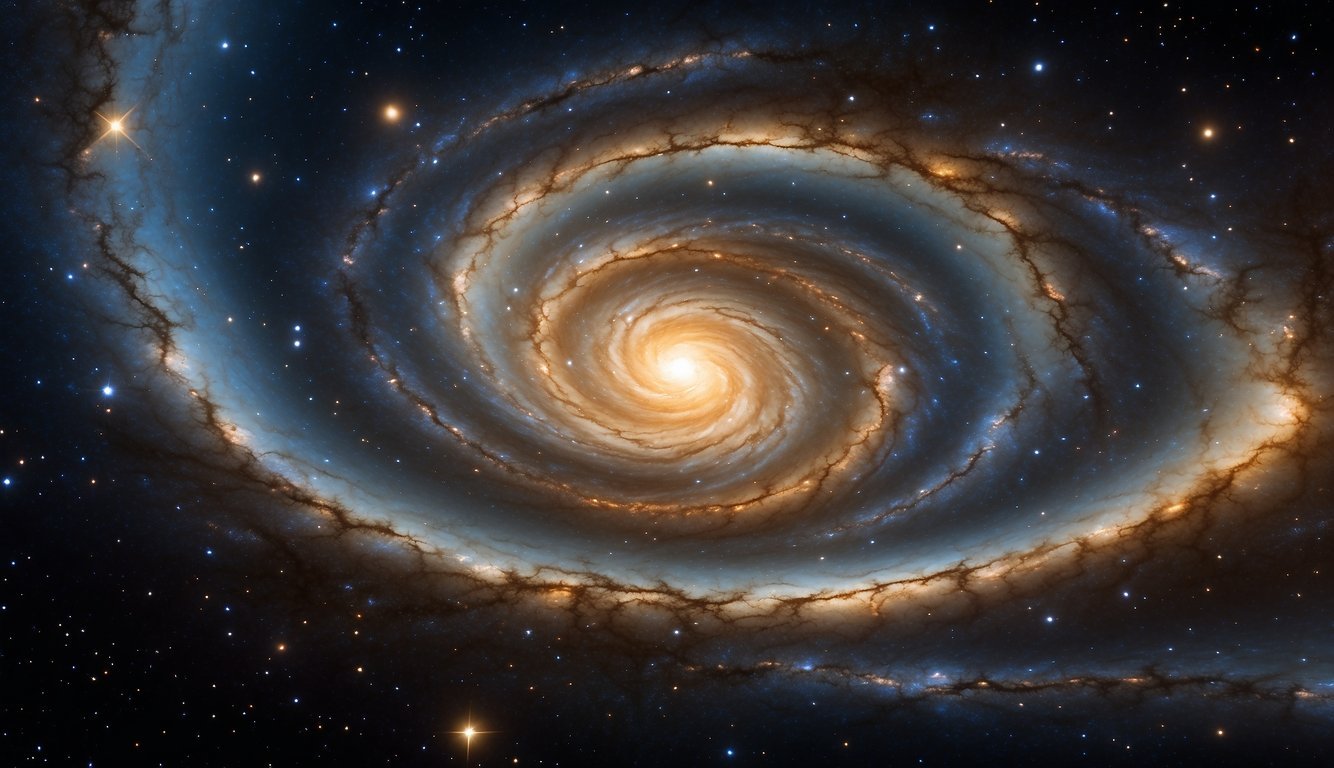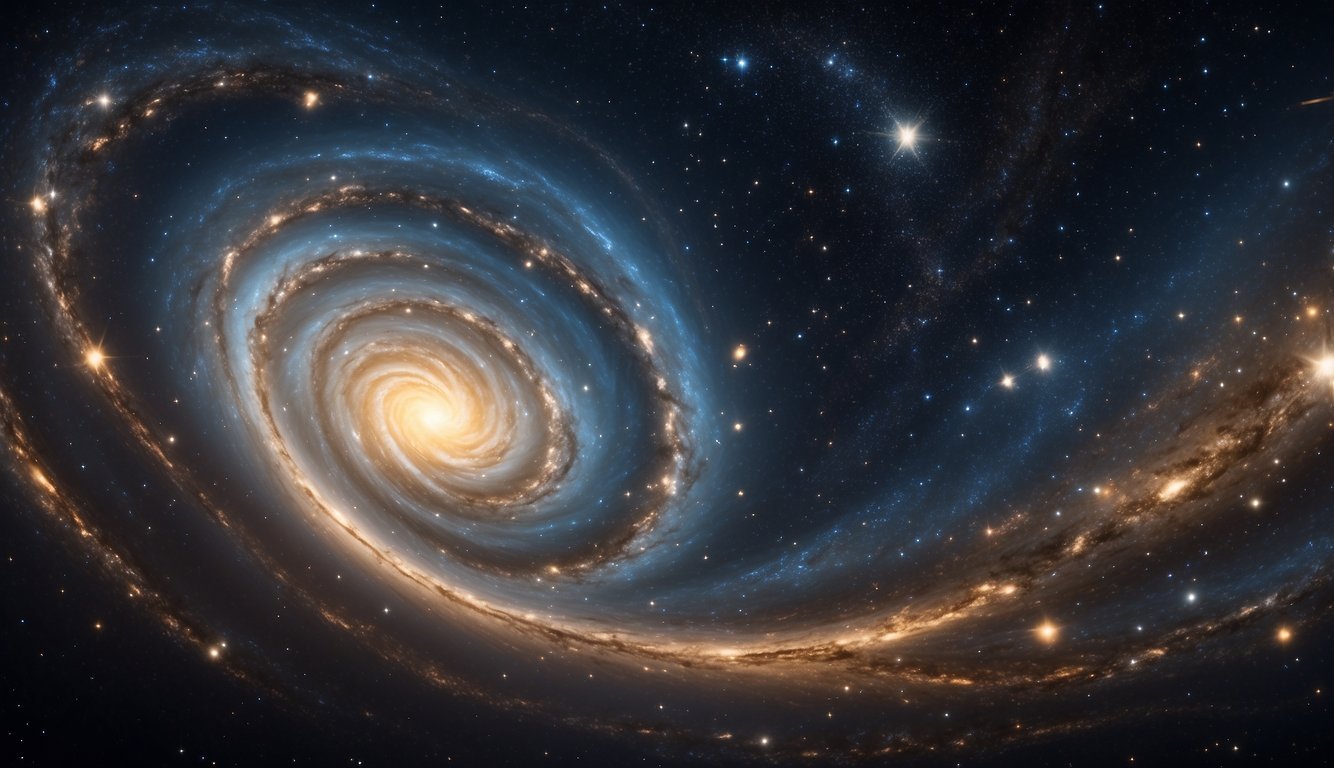Documentary Review: Unknown: Cosmic Time Machine (2023)
A Deep Dive into the Universe
"Unknown: Cosmic Time Machine," a 2023 documentary on Netflix, offers an immersive dive into the groundbreaking mission of the James Webb Space Telescope (JWST). This film, part of the 'Unknown' series, vividly captures the intricate journey of engineers and scientists working together to launch what is hailed as the most advanced space telescope ever created. From liftoff to the breathtaking images of our universe, this documentary reveals the awe-inspiring potential of the JWST.
At just 64 minutes, the documentary is a succinct and informative watch, ideal for both space enthusiasts and casual viewers alike. It skillfully highlights the technological marvels behind the JWST, detailing how these advancements will redefine our grasp of the cosmos. The narrative begins with mesmerizing shots of our solar system, gradually expanding to explore the vast, unexplored reaches of space.
Featuring insights from prominent scientists and engineers, including appearances by key figures like Amber Straughn and Thomas Zurbuchen, "Unknown: Cosmic Time Machine" effectively communicates the significance of this monumental project. The film's ability to captivate and educate ensures it stands out as a must-watch in the realm of space documentaries.
Background of 'Unknown: Cosmic Time Machine'
Unknown: Cosmic Time Machine is a 2023 documentary streaming on Netflix. This film is the fourth installment in Netflix's 'Unknown' series, directed by Shai Gal. It provides an in-depth look at the James Webb Space Telescope (JWST) and its groundbreaking mission.
The JWST is a monumental project by NASA, developed with contributions from the European Space Agency (ESA) and the Canadian Space Agency (CSA). It was designed to be the successor to the Hubble Space Telescope, with advanced capabilities to observe the universe's earliest galaxies and study the formation of stars and planets.
The documentary emphasizes the technological advancements that were necessary to make the JWST a reality. It covers various challenges that engineers and scientists faced during the telescope's development and launch.
Featuring interviews with key figures involved in the mission, Unknown: Cosmic Time Machine provides viewers with a behind-the-scenes perspective on the preparations and obstacles leading up to the successful deployment of the JWST.
The film captures the excitement and tension of the mission's critical moments, showcasing the dedication of the teams working tirelessly to ensure its success. The release of the first science images from JWST demonstrated its astounding capabilities, exceeding the expectations of astronomers worldwide.
Unknown: Cosmic Time Machine also highlights the potential scientific breakthroughs expected from the JWST, which include searching for signs of life on distant exoplanets and studying the universe's history. This documentary offers a detailed exploration of one of the most ambitious space missions to date.
Synopsis of the Documentary
"Unknown: Cosmic Time Machine" is a 2023 documentary that follows the making and launch of the James Webb Space Telescope (JWST).
The film is part of Netflix's 'Unknown' series and is directed by Shai Gal. It captures the efforts of scientists and engineers who work tirelessly to send the JWST into space.
Opening with stunning shots of the solar system, the documentary delves into the complexities and challenges faced during the creation of this monumental telescope.
At a length of 64 minutes, viewers are offered an insight into the technological advancements and scientific ambitions that drive space exploration. The film features interviews with prominent figures such as Joe Biden, Amber Straughn, and Thomas Zurbuchen.
The narrative seamlessly transitions from the JWST's inception to its launch, showcasing the dedication and expertise required to achieve this mission.
Analysis of the Documentary's Content
The documentary Unknown: Cosmic Time Machine meticulously covers the making and launch of the James Webb Space Telescope (JWST). It explores theoretical foundations, historical milestones, and the precision of scientific information presented.
Theoretical Foundations
Unknown: Cosmic Time Machine examines the essential theories that underpin the James Webb Space Telescope. It highlights the scientific principles that justify JWST's construction, such as the behavior of light and the expansion of the universe.
These segments build a robust groundwork for understanding why specific technologies were employed.
The connection between the JWST's mission and concepts like the Big Bang theory, black holes, and galaxy formation is emphasized. This approach ensures that viewers grasp the telescope's potential to reshape our comprehension of cosmic evolution.
Historical Context
The documentary situates JWST within the larger historical arc of space exploration. It provides insights into previous space missions, like the Hubble Space Telescope, charting a clear legacy leading up to JWST's launch.
The film punctuates its narrative with significant historical events that influenced the development and timeline of JWST.
There are references to landmark achievements and obstacles encountered since the project's inception. This rich context helps viewers appreciate the perseverance and ingenuity required to bring such an ambitious endeavor to fruition.
Scientific Accuracy
The filmmakers take care to present scientifically accurate information. The documentary features interviews with scientists and engineers involved in the JWST project, ensuring the authenticity of the data shared.
Footage of meticulous testing and launch preparations underscores the precision necessary for a mission of this scale.
Visuals and graphics are employed to explain complex phenomena, such as infrared imaging and exoplanet detection, making them accessible to a broader audience. The documentary succeeds in maintaining a high standard of scientific integrity, making the learning experience both credible and engaging.
Production Quality
"Unknown: Cosmic Time Machine" excels in several areas, particularly in its cinematography, editing, sound design, and visual effects. Each plays a vital role in creating a captivating experience for the viewer.
Cinematography
The cinematography in "Unknown: Cosmic Time Machine" is noteworthy. The documentary uses wide shots of the cosmos and close-ups of scientists at work, creating a visually compelling narrative. The use of high-definition cameras enhances the viewer's experience, providing crisp and clear imagery. Shots of the James Webb Space Telescope (JWST) launch and assembly are particularly striking. These images capture both the grandeur of space and the intricate details of the technology involved. The film's lighting and camera angles contribute to its immersive quality, making the audience feel part of the journey.
Editing
The editing in this documentary is sharp and effective, keeping the narrative flowing smoothly. Scene transitions are seamless, which helps maintain the viewer’s attention. The editors expertly balance technical explanations with visual storytelling. Recurring shots of the JWST and its launch are well-timed, emphasizing the documentary's central theme. The pacing is well-calibrated, ensuring that both casual viewers and astronomy enthusiasts remain engaged. The use of archival footage alongside newly shot content is integrated smoothly, providing context and depth to the documentary's narrative.
Sound and Music
The sound design and music score play a crucial role in elevating the documentary's impact. The sound effects of the rocket launch and the ambient noises of the lab settings add authenticity to the scenes. The documentary features a compelling musical score that complements its visual elements. The music varies from serene orchestral pieces during space scenes to more intense compositions during moments of suspense, such as the JWST launch. This dynamic range in the music helps to underscore the emotional highs and lows of the narrative, making the viewing experience more immersive.
Visual Effects
Visual effects are a standout feature in "Unknown: Cosmic Time Machine." The documentary uses computer-generated imagery (CGI) to illustrate complex space phenomena and the JWST’s capabilities. These effects are not only visually stunning but also educational. For instance, CGI is used to simulate the telescope’s deployment in space and its journey across the cosmos. These visualizations make technical concepts accessible to a broad audience. The accuracy and quality of the visual effects reflect the high production standards of the documentary, providing a deeper understanding of the scientific achievements presented. The integration of visuals with live-action footage helps in providing a coherent and engaging narrative.
Director's Vision and Execution
Shai Gal, the director of Unknown: Cosmic Time Machine, masterfully presents a narrative centered around the creation and launch of the James Webb Space Telescope (JWST). His vision spotlights the intricate teamwork and technical prowess behind the project.
The documentary spans 64 minutes and remains focused on the practical aspects, avoiding unnecessary dramatization. Gal's direction ensures a clear, factual representation of the JWST's development, aligning well with the documentary's educational goals.
Interviews with key figures like Joe Biden, Amber Straughn, and Becky Smethurst provide firsthand insights. These perspectives are blended seamlessly into the storyline, highlighting crucial milestones in the JWST's journey.
Gal's approach to storytelling involves minimalistic yet compelling cinematography. The documentary uses real footage and computer-generated imagery (CGI) to illustrate complex scientific concepts, making them accessible.
The pacing of the film is deliberate. By keeping the documentary concise, at just over an hour, Gal ensures that the audience remains engaged throughout without feeling overwhelmed by technical details.
The use of narrative techniques such as interviews, live footage, and CGI elevates the content, providing viewers with a well-rounded understanding of the JWST mission. This method of execution underscores Gal's vision of merging education with visual appeal.
In essence, Unknown: Cosmic Time Machine reflects Shai Gal's clear and methodical directing style, successfully bringing the story of one of humanity's most ambitious space projects to life.
Expert Interviews and Commentaries
In "Unknown: Cosmic Time Machine," the documentary benefits from featuring a range of expert interviews and commentaries from leading figures in the field of space exploration.
Dr. John Mather, Nobel laureate, delves into the scientific goals and technical challenges associated with the James Webb Space Telescope (JWST). He provides insights into the telescope's ability to peer into the early universe, shedding light on its potential discoveries.
Jane Rigby from NASA discusses the engineering feats that made the JWST possible. She emphasizes the collaboration between international space agencies and the innovative technologies that underpin the telescope's design and function.
Prof. Heidi Hammel, a renowned planetary scientist, speaks about the telescope's capability to investigate distant exoplanets. Her commentary highlights the importance of studying these celestial bodies to better understand the potential for life beyond Earth.
The documentary also features interviews with engineers and mission controllers who played key roles in the JWST's development and launch. Their firsthand accounts offer a behind-the-scenes look at the trials and triumphs experienced during the project's long journey.
Visual Effects Artist, Mike Okuda, explains the role of computer-generated imagery (CGI) in the documentary. He demonstrates how CGI helps visualize complex astronomical phenomena in an accessible way for the audience.
These expert interviews and commentaries enrich the documentary by providing multiple perspectives on the JWST's mission. They help convey the telescope's groundbreaking potential to transform our understanding of the universe.
Public and Critical Reception
Unknown: Cosmic Time Machine has garnered diverse responses from both the public and critics. Released on Netflix in 2023, the documentary has been reviewed by various media outlets.
Critical Reception
The documentary received mixed reviews from critics. The Review Geek praised its comprehensive portrayal of space exploration and the technological marvel of the James Webb Space Telescope (JWST). Rotten Tomatoes rated it 3/5, appreciating its coverage despite its short duration.
The Space Review highlighted the documentary's ability to meet, and sometimes exceed, the expectations of astronomers. Common Sense Media noted the documentary's ability to thrill audiences, even within a concise 64-minute runtime.
Public Reception
Audience reception has been similarly varied. Many viewers enjoyed the engaging storytelling and captivating visuals. User reviews on IMDb reflect mixed sentiments, with some praising the succinct and informative nature of the documentary, while others wished for more depth and extended coverage.
In summary, Unknown: Cosmic Time Machine provides an insightful look into the JWST's mission, resonating with different segments of its audience in unique ways.
Comparative Analysis with Similar Documentaries
Unknown: Cosmic Time Machine stands out for its focus on the James Webb Space Telescope (JWST). This angle sets it apart from other space documentaries like The Farthest: Voyager in Space and Chasing Einstein, which explore different aspects of space exploration and scientific discovery.
The Farthest: Voyager in Space details the journey of the Voyager spacecraft. It emphasizes the long-term mission, whereas Unknown: Cosmic Time Machine centers on the breakthrough development and operational stages of JWST.
Chasing Einstein investigates the search for dark matter, offering a theoretical perspective on the universe, contrasting with Unknown: Cosmic Time Machine’s concrete technological and operational focus.
Documentary Focus Unique Element Unknown: Cosmic Time Machine James Webb Space Telescope Technological advancements and behind-the-scenes view The Farthest: Voyager in Space Voyager spacecraft journey Long-term mission and interstellar achievements Chasing Einstein Dark matter and theoretical perspectives Exploration of Einstein's theories and their impacts
These documentaries vary in their narrative and thematic focuses, but each contributes uniquely to the public's understanding of space and astronomy.
Stylistically, Unknown: Cosmic Time Machine presents a storyline enriched with interviews and behind-the-scenes footage. This approach offers viewers a more intimate and detailed look at the mission's execution.
Conversely, The Farthest utilizes archival footage and interviews with scientists and engineers involved in the Voyager mission, providing historical context and long-term implications of the project.
Chasing Einstein blends scientific testimonials with exploratory visuals, aiming to unravel the complexities of theoretical physics and its ongoing dilemmas.
Each documentary brings a different facet of space exploration to the forefront, allowing audiences to gain comprehensive insights into humanity's quest to understand the cosmos.
Impact on Science and Media
The documentary "Unknown: Cosmic Time Machine" explores the impact of the James Webb Space Telescope (JWST) on both science and media.
Science:
The JWST has revolutionized space exploration with its advanced imaging capabilities. It has provided unprecedented insights into the formation of stars and galaxies. The detailed images of the early universe have sparked new discussions and theories in the scientific community.
Media:
The release of the JWST's first images greatly influenced popular media. News outlets covered the event extensively, captivating a global audience. Documentaries, including this one, highlighted the technological and human achievements behind the telescope, boosting public interest in space science.
Educational Influence:
Educational programs and resources now frequently incorporate information and images from the JWST. Schools and universities use these materials to inspire and educate students about astronomy and engineering.
The successful launch and operation of JWST have also inspired future space missions. Researchers and engineers use this as a benchmark for future projects, aiming to push the boundaries of what is possible in space exploration.
Final Thoughts and Recommendations
"Unknown: Cosmic Time Machine" is a concise yet impactful documentary. At just 64 minutes, it manages to pack in a wealth of information about the James Webb Space Telescope (JWST).
The visual storytelling is compelling. The use of real imagery from the JWST project keeps viewers engaged.
Strengths:
Educational value: Offers deep insights into the JWST.
Visual appeal: High-quality graphics and real footage.
Expert commentary: Features insights from engineers and scientists involved in the mission.
Audience:
Ideal for space enthusiasts.
Suitable for anyone interested in technological advances.
Accessible for general audiences due to its clear and straightforward presentation.
Although it is short, the documentary does a good job of explaining complex topics in an understandable way. This makes it suitable for viewers without a scientific background.
Recommendation:
Highly recommended for those interested in space exploration.
An excellent educational resource for classrooms and science workshops.
Engaging weekend watch for families and casual viewers looking to expand their knowledge of space.
For its length, "Unknown: Cosmic Time Machine" achieves a remarkable balance between education and entertainment. The documentary serves as a fascinating gateway into the wonders of our universe, seen through the lens of one of the most advanced telescopes ever made.




